11 Lesser Known Indian Leafy Vegetables Blog – HealthifyMe Blog – HealthifyMe – The definitive guide to weight loss, fitness and living a healthier life.
Leafy vegetables hold a special place in Indian cuisine, and are widely used in a myriad of traditional dishes. Indian cooking showcases an array of leafy vegetables, each with its unique flavour profile and culinary purpose. While popular varieties like spinach and fenugreek are well-known, there is a treasure trove of lesser-known Indian leafy vegetables that offer a plethora of health benefits and gastronomic delights.
Lesser Known Indian Leafy Vegetables and Their Health Benefits
While spinach, fenugreek, and other popular leafy vegetables are widely recognised and appreciated in Indian cuisine, there are others that deserve attention too. These lesser-known Indian leafy vegetables offer unique flavours, textures, and health benefits. Let’s explore some of them:
1. Water Amaranth (Chaulai Saag)
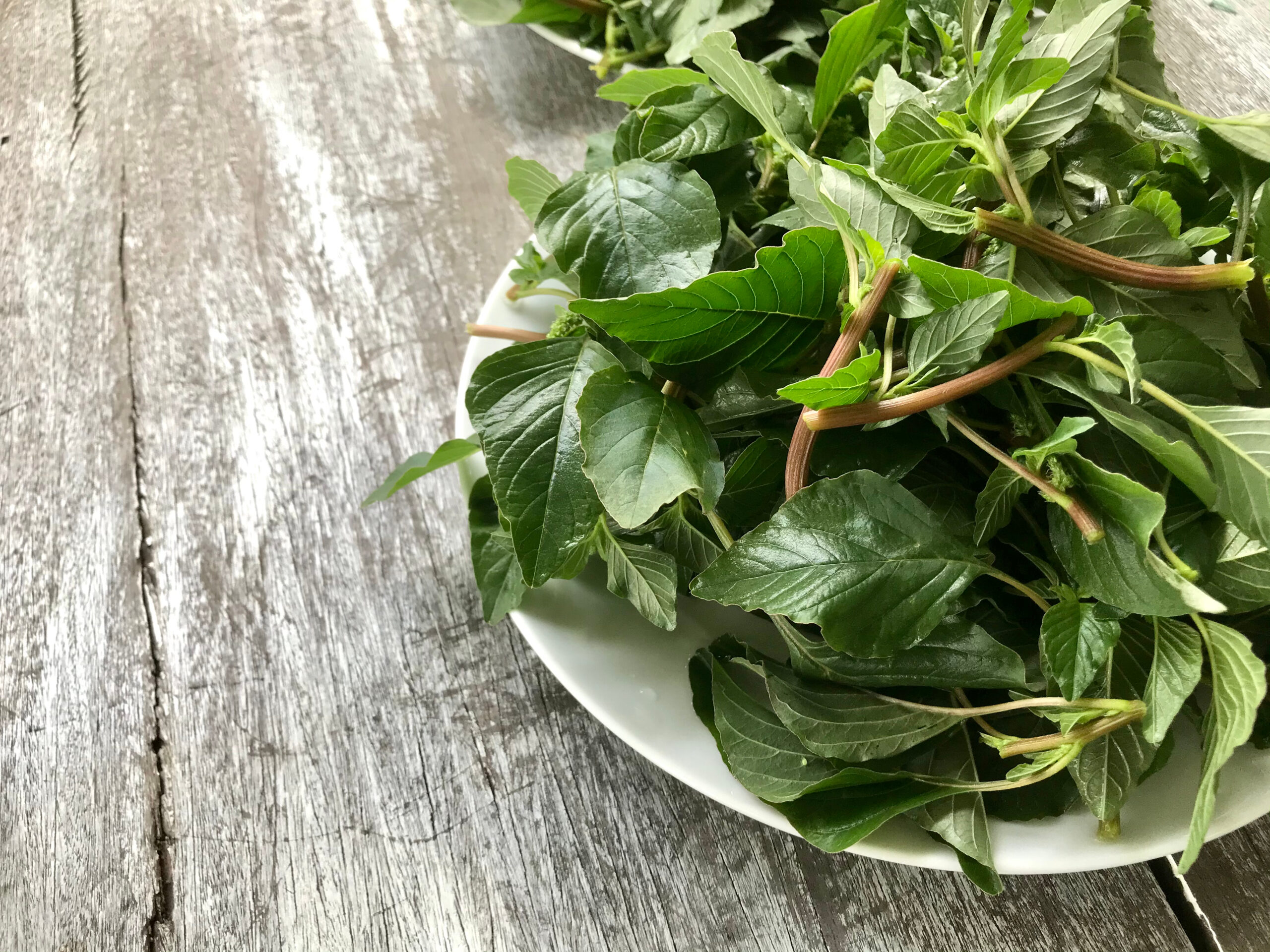
Description and Appearance: Water Amaranth, also known as Ponnaganti Koora or Chaulai Saag is a leafy vegetable with tender, lance-shaped leaves and red or green stems. It belongs to the Amaranthaceae family and has a slightly tangy taste.
Health Benefits
Water amaranth offers a myriad of health benefits. Packed with essential nutrients like vitamins A, C, and E, along with minerals such as iron, calcium, and potassium, water amaranth supports various bodily functions, including immune health, vision, bone strength, and blood pressure regulation. With its antioxidant properties, it helps protect against oxidative stress and lowers the risk of chronic diseases. Furthermore, water amaranth is high in fibre, aiding digestion, promoting regular bowel movements, and contributing to healthy blood sugar and cholesterol levels. As a low-calorie and low-fat option, water amaranth supports weight management while providing a satisfying and nutritious addition to meals. Incorporating water amaranth into your diet can enhance overall well-being and nourish your body with its abundant health-promoting qualities.
Culinary Uses: Water Amaranth can be used in various Indian dishes, such as stir-fries, curries, and soups. It can also be incorporated into salads or sautéed with other vegetables for a nutritious side dish.
2. Purslane (Kulfa)
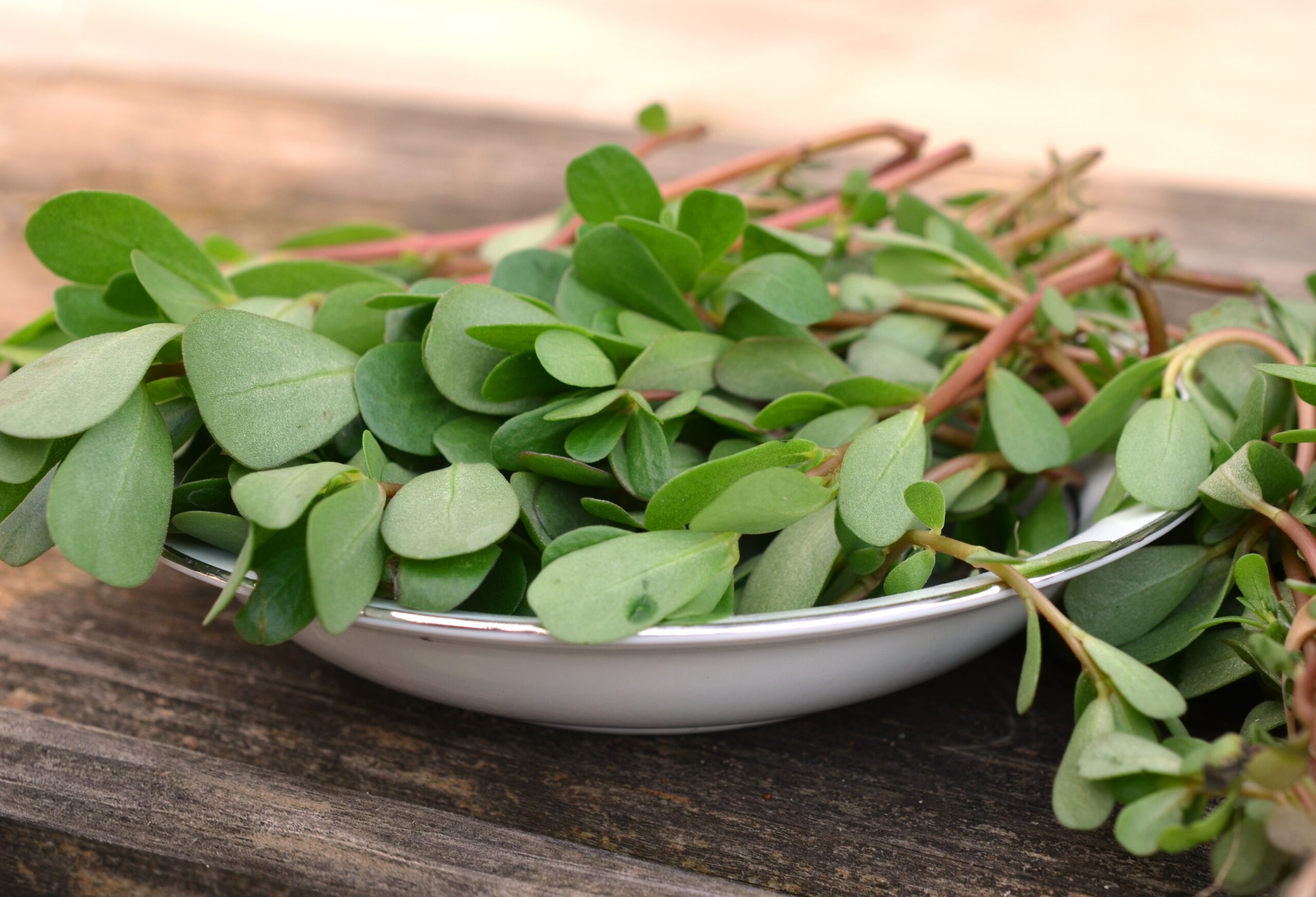
Description and Appearance: Purslane, known as Kulfa in India, is a succulent leafy vegetable with small, fleshy leaves and a slightly sour and tangy flavour. It is known for its vibrant green colour and juicy texture.
Health Benefits
Packed with essential nutrients, water purslane is a rich source of vitamins A, C, and E, which support healthy skin, boost the immune system, and protect against oxidative stress. It is also a good source of minerals such as iron, calcium, and potassium, which are vital for the proper functioning of the body. Additionally, water purslane is known for its high omega-3 fatty acid content, contributing to heart health and reducing inflammation. With its high fibre content, it aids in digestion, promotes regular bowel movements, and helps maintain healthy blood sugar levels. Water purslane is low in calories and fat, making it an excellent choice for weight management. Including water purslane in your diet can provide a range of health benefits and contribute to overall well-being.
Culinary Uses: Purslane can be used raw in salads, added to soups, or stir-fried with other vegetables. Its tangy taste adds a refreshing element to dishes and makes it a versatile ingredient in Indian cooking.
3. Indian Pennywort (Brahmi)
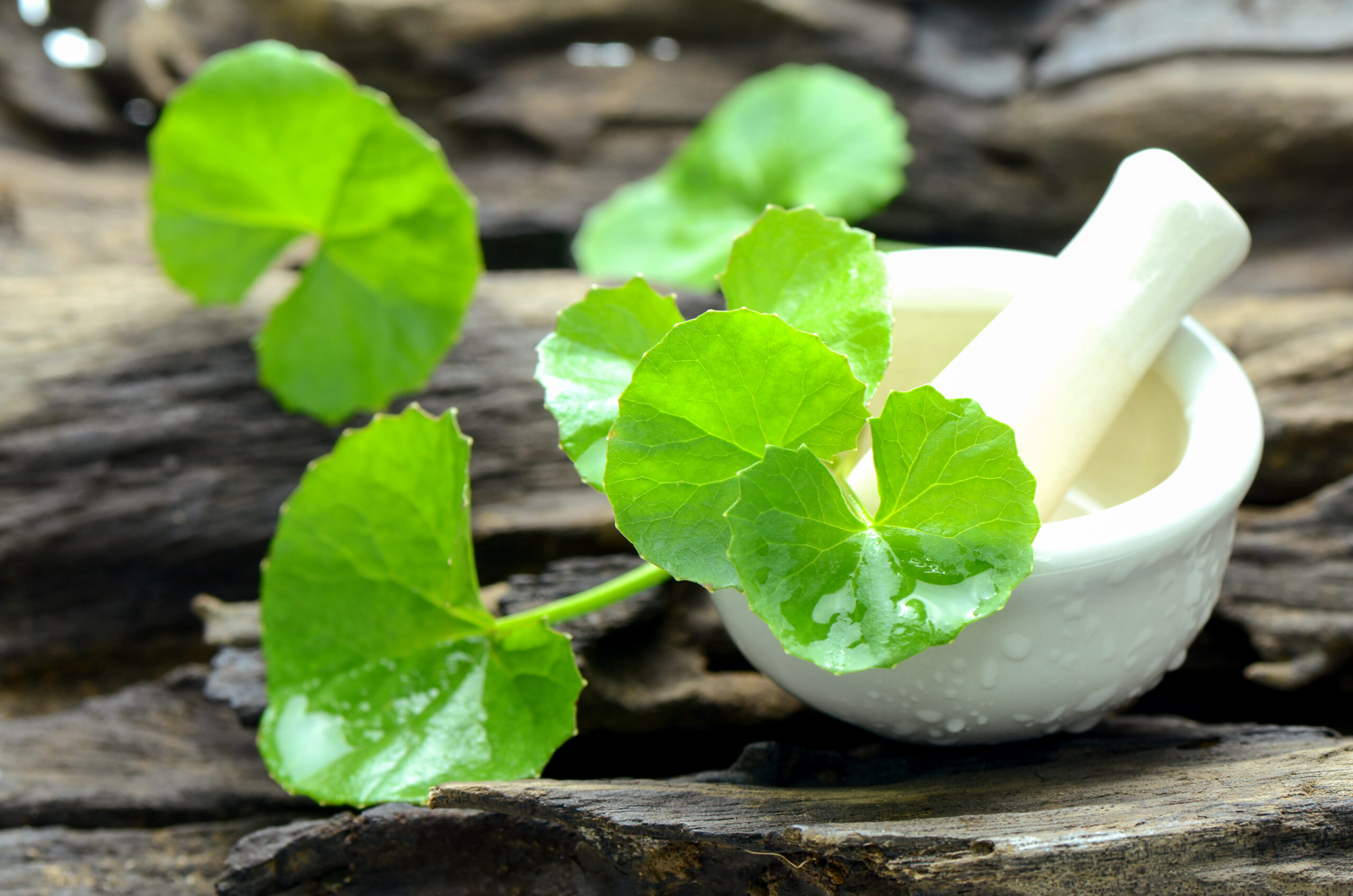
Description and Appearance: Indian Pennywort, commonly known as Brahmi, is a small, round-shaped leafy vegetable with a fresh, slightly bitter taste. It is known for its medicinal properties and is often used in Ayurvedic preparations.
Health Benefits
Indian pennywort, also known as Brahmi, is a lesser-known leafy vegetable that offers a multitude of health benefits. Rich in antioxidants, Indian pennywort helps protect against oxidative stress and supports overall cellular health. It is a valuable source of vitamins A, C, and B-complex, which promote healthy skin, boost the immune system, and support neurological function. Indian pennywort also provides essential minerals such as calcium, magnesium, and iron, contributing to strong bones and optimal red blood cell production. Renowned for its potential cognitive-enhancing properties, Indian pennywort may aid in memory improvement and cognitive function. Apart from its use in food, it is also used to make hair oil.
Culinary Uses: Indian Pennywort can be consumed raw in salads or used as a garnish. It is also used to make chutneys, juices, and herbal teas due to its medicinal properties.
Read More: An Expert’s Take On Brahmi Plant
4. Indian Sorrel (Changeri)
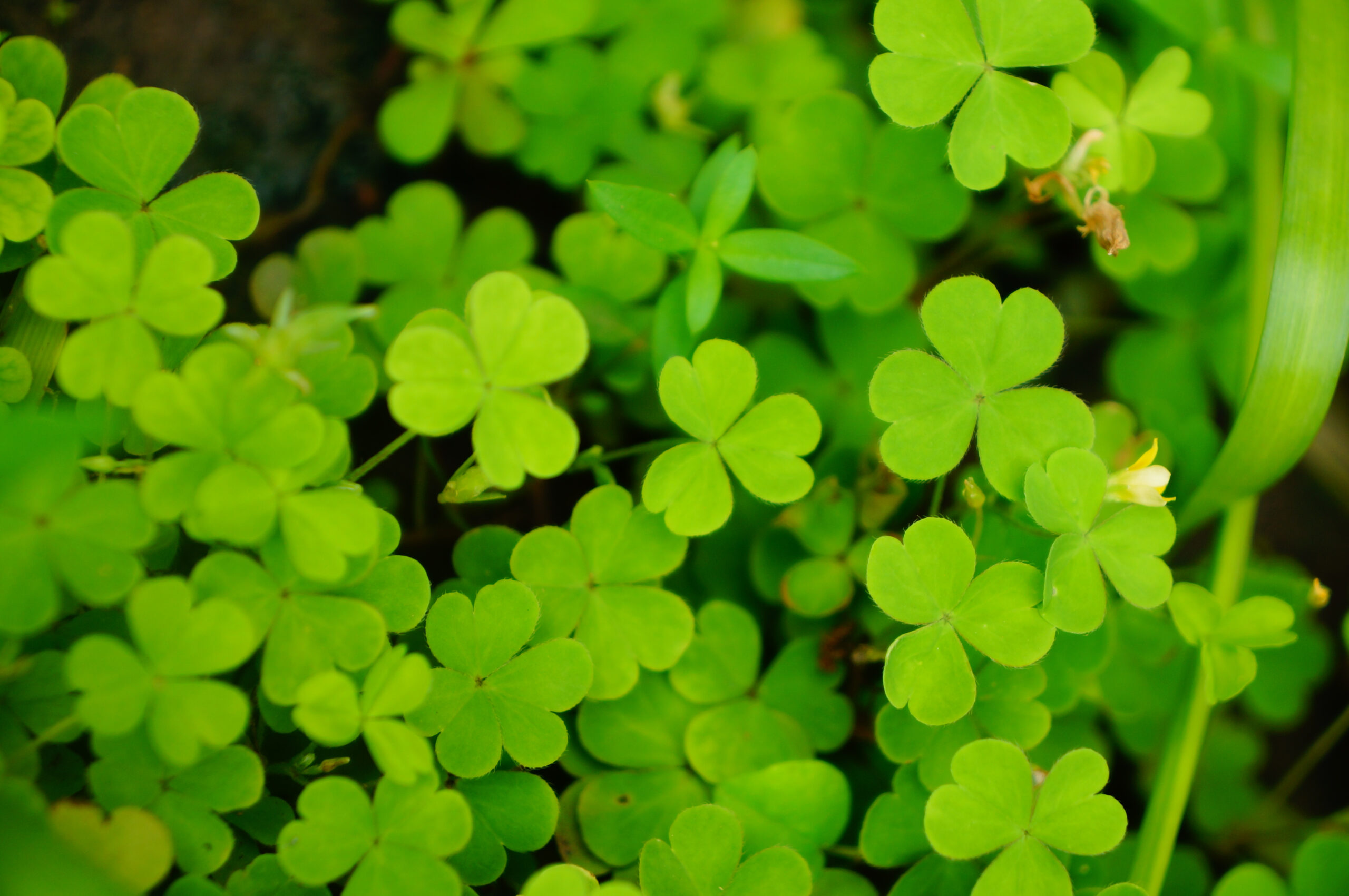
Description and Appearance: Indian Sorrel, also known as Changeri, is a leafy vegetable with arrow-shaped leaves and a tangy, citrus-like flavour. It adds a refreshing and sour note to dishes.
Health Benefits
Packed with nutrients, Indian sorrel is a rich source of vitamin C, providing immune-boosting properties and supporting collagen production for healthy skin and connective tissues. It also contains vitamins A and B-complex, along with minerals like calcium and iron, which are essential for maintaining overall health. Several studies have shown that sorrel has potent antibacterial properties, so they are extensively used for removing bacteria from the body. Indian sorrel’s tangy taste comes from oxalic acid, which contributes to its refreshing flavour and potential antioxidant properties. The consumption of Indian sorrel has been associated with its ability to aid digestion, promote healthy metabolism, and provide a cooling effect on the body, making it a popular ingredient in traditional Indian summer coolers. Incorporating Indian sorrel into your diet can add a unique tanginess to dishes while offering a range of nutritional benefits for your well-being.
Culinary Uses: Indian Sorrel can be used in curries, and lentil dishes, or mixed with yoghurt to make chutneys or raitas. It is also used to prepare refreshing drinks and is a popular ingredient in traditional Indian summer coolers.
5. Red Sorrel (Lal Saag/ Laal Shaakh)
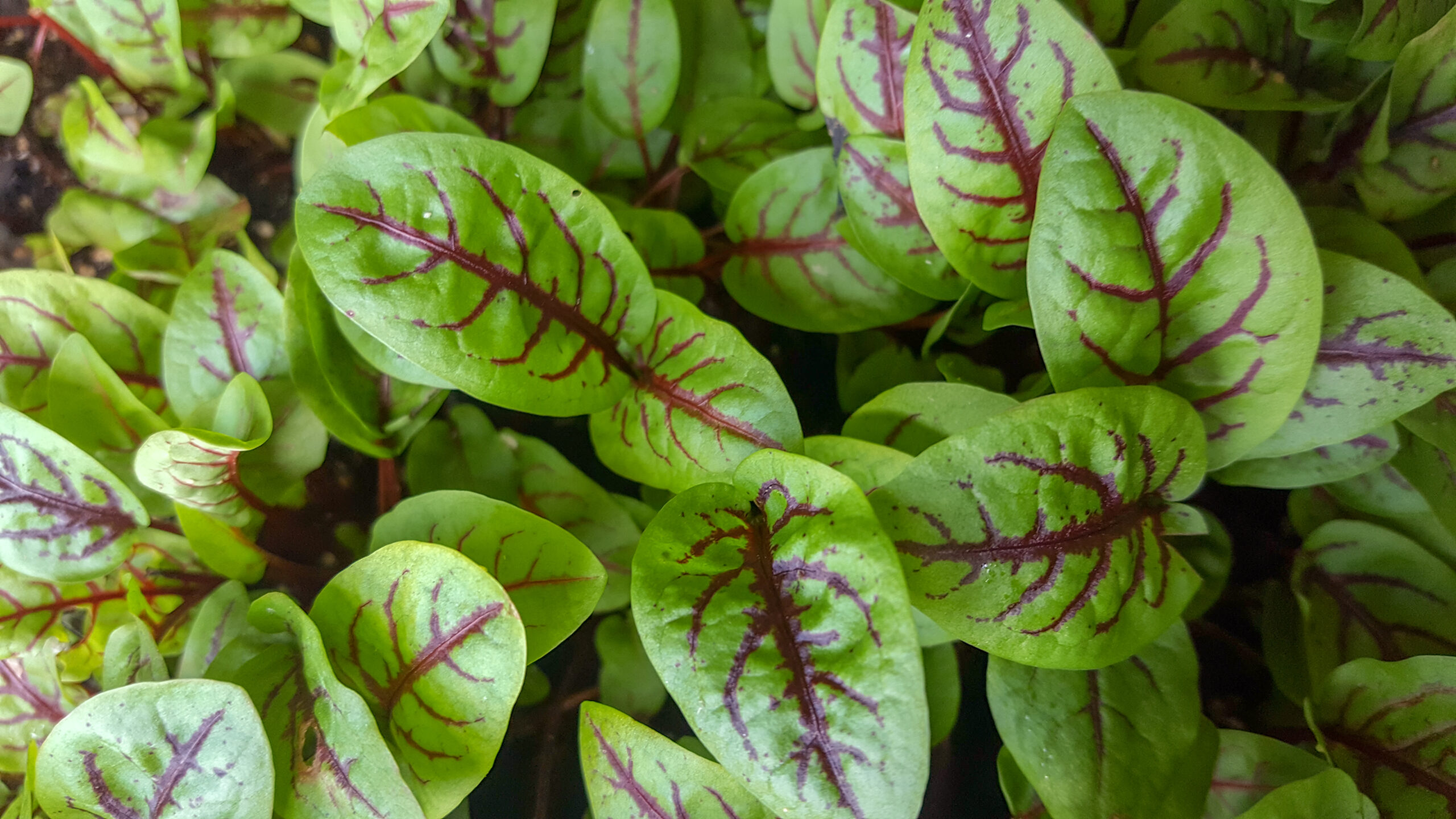
Description and Appearance: Red Sorrel, also known as Red Spinach, is a leafy vegetable with vibrant red or maroon leaves. It has a tangy and slightly sour taste, similar to that of regular spinach.
Health Benefits
Red sorrel, also known as or Red Spinach, is a lesser-known leafy vegetable that offers numerous health benefits. Packed with nutrients, red sorrel is a rich source of vitamins A, C, and K, which support healthy vision, boost the immune system, and promote blood clotting and bone health. It is also a good source of iron, calcium, and antioxidants, which according to research help combat oxidative stress and reduce the risk of chronic diseases. Red sorrel’s vibrant red colour comes from anthocyanins, powerful antioxidants that have been linked to anti-inflammatory effects and potential cardiovascular benefits. Additionally, red sorrel is low in calories and fat, making it a great choice for weight management. Incorporating red sorrel into your diet can provide a range of health benefits, from supporting overall well-being to promoting healthy ageing.
Culinary Uses: Red Sorrel can be used in a variety of dishes, such as salads, sautés, and soups. It adds a pop of colour and tanginess to the preparations and can be cooked or consumed raw.
6. Basella (Poi Shaak/ Malabar Spinach)
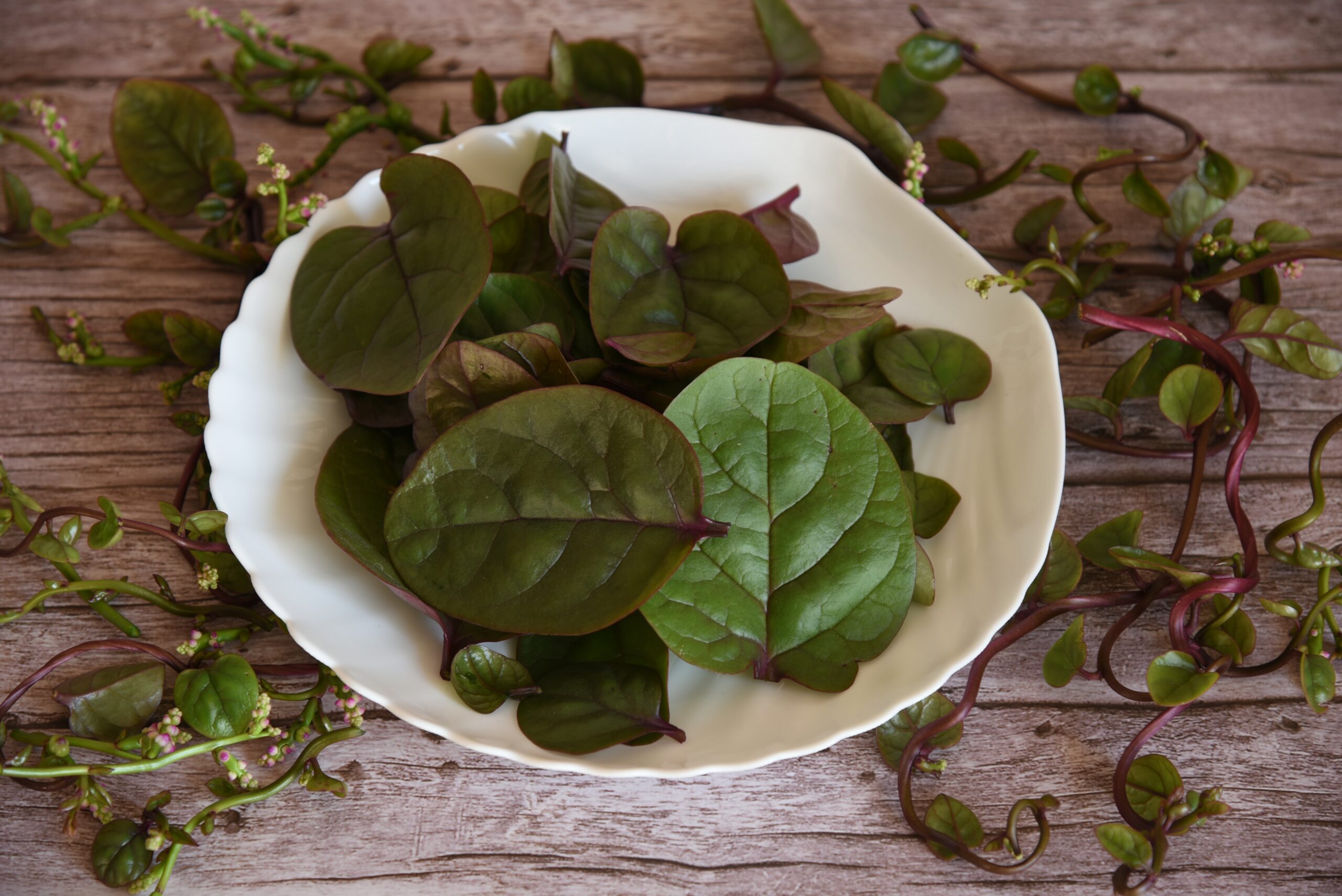
Description and Appearance: Basella, known as Poi Shaak or Malabar Spinach, is a leafy green with heart-shaped leaves and a mild, earthy taste.
Health Benefits
Loaded with nutrients, basella is a rich source of vitamins A, C, and iron. Vitamin A supports healthy vision, while vitamin C boosts the immune system and iron helps in red blood cell production. Basella also provides calcium, magnesium, and dietary fibre, which promote strong bones, optimal muscle function, and a healthy digestive system. With its antioxidant properties, basella helps protect against cellular damage and reduce the risk of chronic diseases. Moreover, research shows that basella has cooling properties and can potentially lower body heat, making it a popular ingredient in traditional Indian summer coolers.
Culinary Uses: Basella can be used in various Indian dishes, such as curries, soups, and dal preparations. It can be cooked like spinach or added raw to salads for a nutritious boost.
7. Red Amaranth (Laal Maath/ Laal Saag)
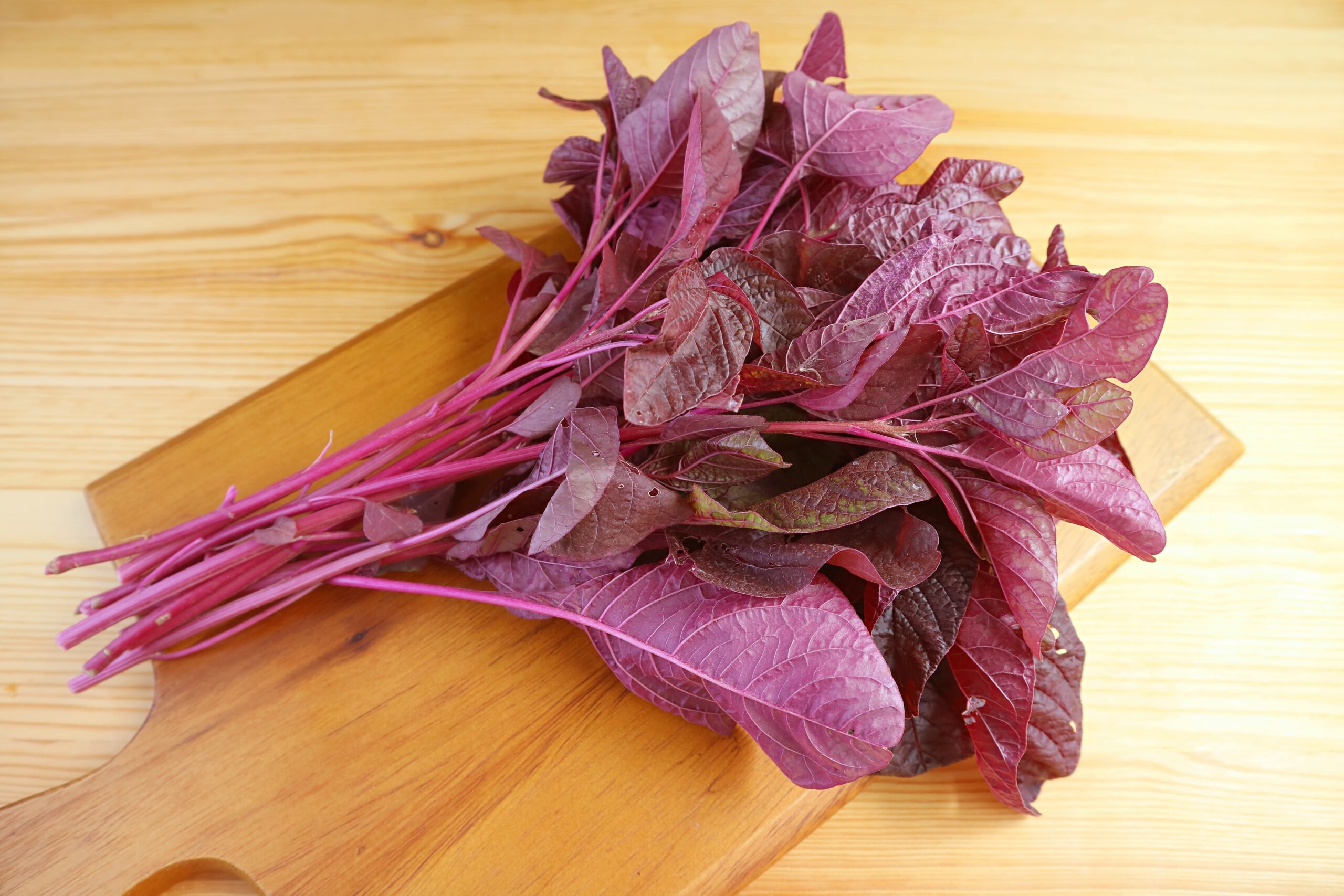
Description and Appearance: Red Amaranth, also known as Laal Maath, is a leafy vegetable with vibrant red leaves and a slightly tangy flavour. It is a close relative of spinach and amaranth greens.
Health Benefits
Bursting with nutrients, red amaranth is a rich source of vitamins A, C, and K. Vitamin A supports healthy vision, while vitamin C boosts the immune system and vitamin K aids in blood clotting and bone health. It also provides minerals like iron, calcium, and potassium, which are essential for maintaining healthy blood, strong bones, and optimal muscle function. Red amaranth’s vibrant red colour is indicative of its potent antioxidants, which help combat oxidative stress and reduce the risk of chronic diseases. Furthermore, red amaranth is a great addition to a weight management diet, as it is low in calories and fat while being high in fibre, promoting a feeling of fullness and aiding in digestion.
Culinary Uses: Red Amaranth can be used in various Indian dishes, such as curries, stir-fries, and lentil-based preparations. It can also be added to soups or sautéed with other vegetables for a nutritious side dish.
8. Garden Cress (Halim)
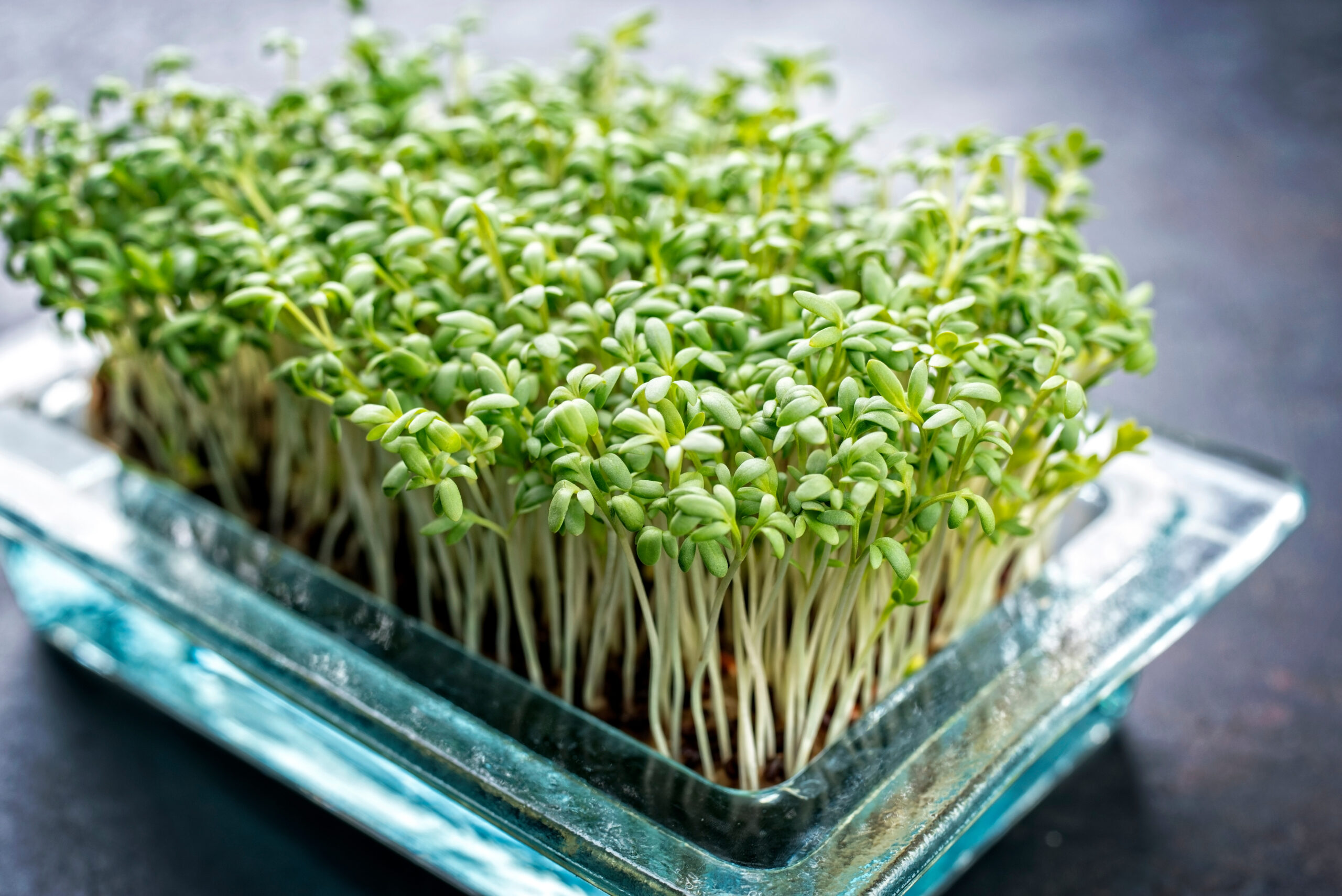
Description and Appearance: Garden Cress, known as Halim in India, is a leafy vegetable with small, narrow oval shape leaves and a peppery taste. It is commonly used as a garnish and culinary herb.
Health Benefits
Packed with nutrients, Halim is a rich source of vitamins A, C, and E, which support healthy skin, boost the immune system, and protect against oxidative stress. It is also a good source of minerals such as calcium and iron, which are vital for strong bones and optimal oxygen transportation in the body. Halim is known for its high omega-3 fatty acid content, which as per reports by the Harvard School of Public Health supports heart health and reduces inflammation. Additionally, its high fibre content aids in digestion, promotes regular bowel movements and helps maintain healthy blood sugar levels. Halim is low in calories and fat, making it an excellent choice for weight management.
Culinary Uses: Garden Cress leaves are commonly used as a garnish for soups, salads, and sandwiches. They can also be used in omelettes or added to stir-fries for added flavour. The seeds are often sprouted and used in salads or as a topping for bread and baked goods.
9. Drumstick Leaves (Moringa)

Description and Appearance: Drumstick Leaves, also known as Moringa leaves, are small leaflets found on the drumstick tree. They have a mild, earthy flavour and are widely consumed in Indian cuisine for their nutritional value.
Health Benefits
Moringa, also known as Drumstick Leaves, is a powerhouse of nutritional benefits. This lesser-known leafy vegetable offers a wide range of health benefits due to its rich nutrient profile. Moringa is packed with vitamins A, C, and E, which support healthy skin, boost the immune system, and provide antioxidant protection against cellular damage. It is also an excellent source of minerals such as calcium, iron, and potassium, which are essential for bone health, oxygen transportation, and maintaining proper electrolyte balance. Moringa is recognised for its high protein content, containing all nine essential amino acids, making it a valuable source of plant-based protein. Moreover, it is known for its potential anti-inflammatory and antioxidant properties, aiding in overall well-being and reducing the risk of chronic diseases. Incorporating moringa into your diet can provide a multitude of health benefits, supporting your body with its nutrient-dense properties.
Read More: Moringa – Health Benefits And Side Effects
Culinary Uses: Drumstick Leaves can be used in various dishes, such as curries, stir-fries, and lentil soups. They can also be added to smoothies or used as a garnish for an added nutritional boost.
10. Gongura (Roselle Leaves)
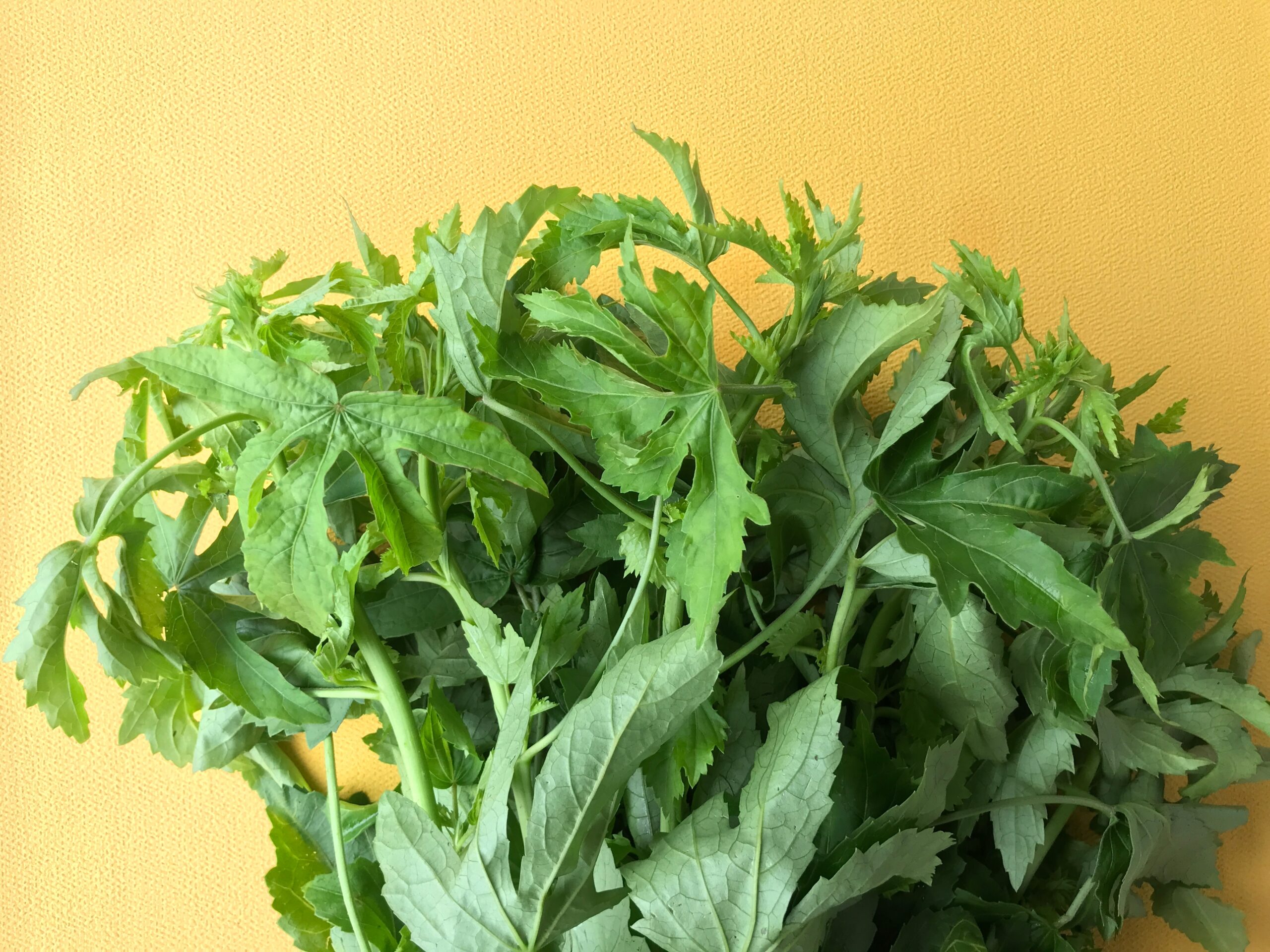
Description and Appearance: Gongura leaves, also known as Roselle leaves, are sour and tangy in taste, making them a distinctive addition to various dishes.
Health Benefits
Gongura leaves, also known as Roselle leaves, offer a range of health benefits due to their rich nutritional profile. These tangy and sour leaves are packed with vitamins, minerals, antioxidants, and dietary fibre. Gongura leaves are an excellent source of vitamins A, C, and B-complex, which support healthy skin, boost the immune system, and promote overall well-being. They are also rich in iron and calcium, essential minerals for maintaining healthy blood cells and strong bones. Additionally, the antioxidants present in Gongura leaves help protect the body against oxidative stress and reduce the risk of chronic diseases. The dietary fibre content aids in digestion, promotes a healthy gut, and helps in maintaining optimal blood sugar levels. Incorporating Gongura leaves into your diet can provide a flavorful and nutritious boost to your meals, supporting your overall health and wellness.
Culinary Uses: Gongura leaves are commonly used in Andhra Pradesh and Telangana cuisines to make dishes like Gongura Pachadi (chutney) and Gongura Dal (lentil soup). They can also be added to curries, pickles, or used as a souring agent in certain preparations.
11. Taro Leaves (Arbi ke Patte)
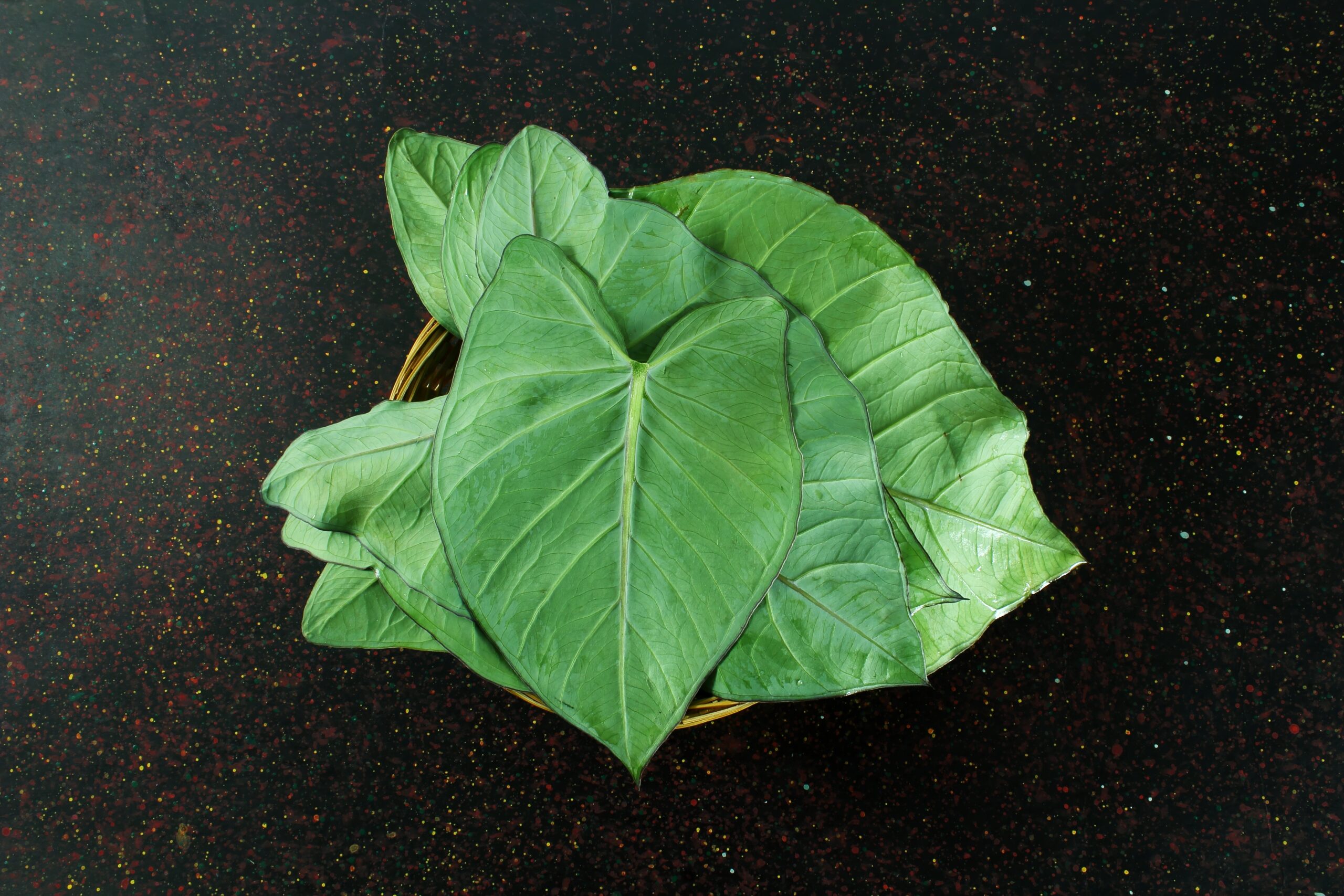
Description and Appearance: Taro leaves, also known as Arbi ke Patte, are large, heart-shaped leaves that belong to the taro plant.
Health Benefits
Taro leaves, also known as Arbi ke Patte, offer numerous health benefits owing to their impressive nutritional profile. These large heart-shaped leaves are rich in vitamins A, C, and K, providing antioxidant properties that support healthy vision, boost the immune system, and contribute to proper blood clotting and bone health. Taro leaves also contain minerals like calcium, iron, and potassium, which are essential for strong bones, oxygen transportation, and maintaining electrolyte balance. Additionally, their dietary fibre content aids in digestion, promotes regular bowel movements, and helps in maintaining healthy blood sugar levels. The presence of antioxidants and other bioactive compounds in taro leaves contributes to their potential anti-inflammatory and disease-fighting properties. Incorporating taro leaves into your diet can provide a flavorful and nutritious addition to your meals while supporting overall health and well-being.
Culinary Uses: Taro leaves are often used in traditional Indian dishes like Patra (taro leaf rolls) or cooked with lentils and spices. They can be steamed, boiled, or used as a wrap for fillings. Taro leaves add a unique flavour and texture to various preparations.
HealthifyMe Suggestion
Leafy greens are generally available around the year and can be incorporated into a wide variety of dishes. Some leafy greens have more attention on them than others but each and provides a host of benefits. It’s best to check whatever leafy greens grow locally in your area first rather than opting for more popular ones. Leafy greens are also easy to grow in small kitchen gardens, so it’s a good idea to try this as well. You may not enjoy all kinds of leafy greens so try different ones to see what you enjoy best. Also, there’s no necessity to just stick to making sabzis with these veggies- get creative and add them to your roti, rice, curry or raita preparations.
Conclusion
In conclusion, exploring the world of lesser-known Indian leafy vegetables can open up a wealth of flavours, textures, and health benefits. These greens, such as Gongura, Taro leaves, and others mentioned throughout the article, offer unique culinary experiences and nutritional advantages. From their vitamin and mineral content to their antioxidant properties and potential health benefits, incorporating these leafy vegetables into your diet can contribute to a well-rounded and nourishing eating plan. By embracing the diversity of Indian cuisine and experimenting with these lesser-known greens, you not only expand your culinary repertoire but also prioritize your well-being. So, let these vibrant and nutritious leafy vegetables find their way into your meals, bringing new dimensions of taste and health to your table.
Disclaimer: The purpose of this article is just to disperse knowledge and raise awareness. It does not intend to replace medical advice from professionals. For further information please contact our certified nutritionists Here
Frequently Asked Questions (FAQs)
Which are the leafy vegetables?
Leafy vegetables refer to a wide variety of plants where the leaves are the primary edible part. Some common examples include spinach, kale, lettuce, Swiss chard, collard greens, and mustard greens.
What is the best green leafy vegetable?
The best green leafy vegetable is subjective and depends on individual preferences and nutritional needs. However, some popular and highly nutritious green leafy vegetables include kale, spinach, Swiss chard, and broccoli leaves.
Which are Indian leafy vegetables?
Indian leafy vegetables encompass a diverse range of greens used in Indian cuisine. Some popular Indian leafy vegetables include spinach (palak), fenugreek leaves (methi), amaranth leaves (chaulai), curry leaves (kadi patta), and coriander leaves (dhania).
Is Carrot a leafy vegetable?
No, carrots are not classified as leafy vegetables. Carrots are considered root vegetables due to the edible part being the taproot.
Is tomato a leafy vegetable?
No, tomatoes are not leafy vegetables either. Tomatoes are classified as fruits botanically, although they are often used in culinary contexts as vegetables.
Which is the king of green leafy vegetables?
The term “king of green leafy vegetables” is subjective and may vary depending on cultural preferences. However, spinach is often considered one of the most nutritious and versatile green leafy vegetables.
How many leafy greens per day?
The recommended amount of leafy greens per day varies depending on individual needs and dietary guidelines. However, a general guideline is to aim for 100-150 grams of leafy greens per day as part of a balanced diet.
Is pumpkin a leafy vegetable?
No, pumpkin is not a leafy vegetable. It is a type of winter squash that belongs to the gourd family and is characterized by its large size, orange flesh, and hard outer skin.
Can we eat leafy vegetables daily?
Yes, incorporating leafy vegetables into your daily diet is generally recommended as they are packed with essential nutrients, fibre, and antioxidants. However, individual dietary needs and preferences should be considered, and it’s always advisable to consult with a healthcare professional or nutritionist for personalised advice.
Reference Links
- Determination of Antimicrobial Activity of Sorrel (Hibiscus sabdariffa) on Esherichia coli O157:H7 Isolated from Food, Veterinary, and Clinical Samples: https://www.ncbi.nlm.nih.gov/pmc/articles/PMC3157304/
- Antioxidants Mediate Both Iron Homeostasis and Oxidative Stress: https://www.ncbi.nlm.nih.gov/pmc/articles/PMC5537786/
- A review on medicinal importance of Basella alba L.: https://worldveg.tind.io/record/46890/
- Omega-3 Fatty Acids: An Essential Contribution: https://www.hsph.harvard.edu/nutritionsource/what-should-you-eat/fats-and-cholesterol/types-of-fat/omega-3-fats/
The post 11 Lesser Known Indian Leafy Vegetables appeared first on Blog – HealthifyMe.
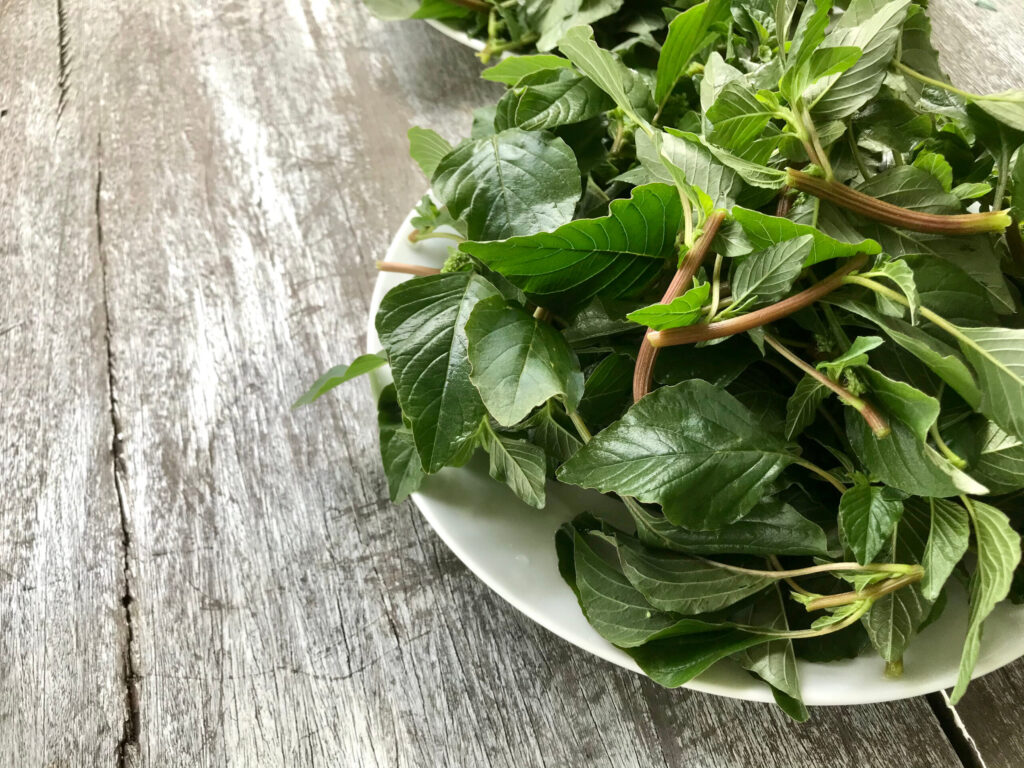
Post your comments
You must be logged in to post a comment.